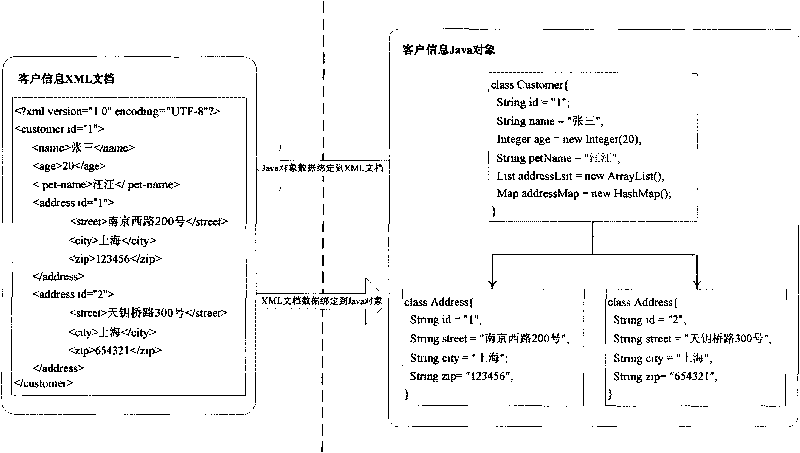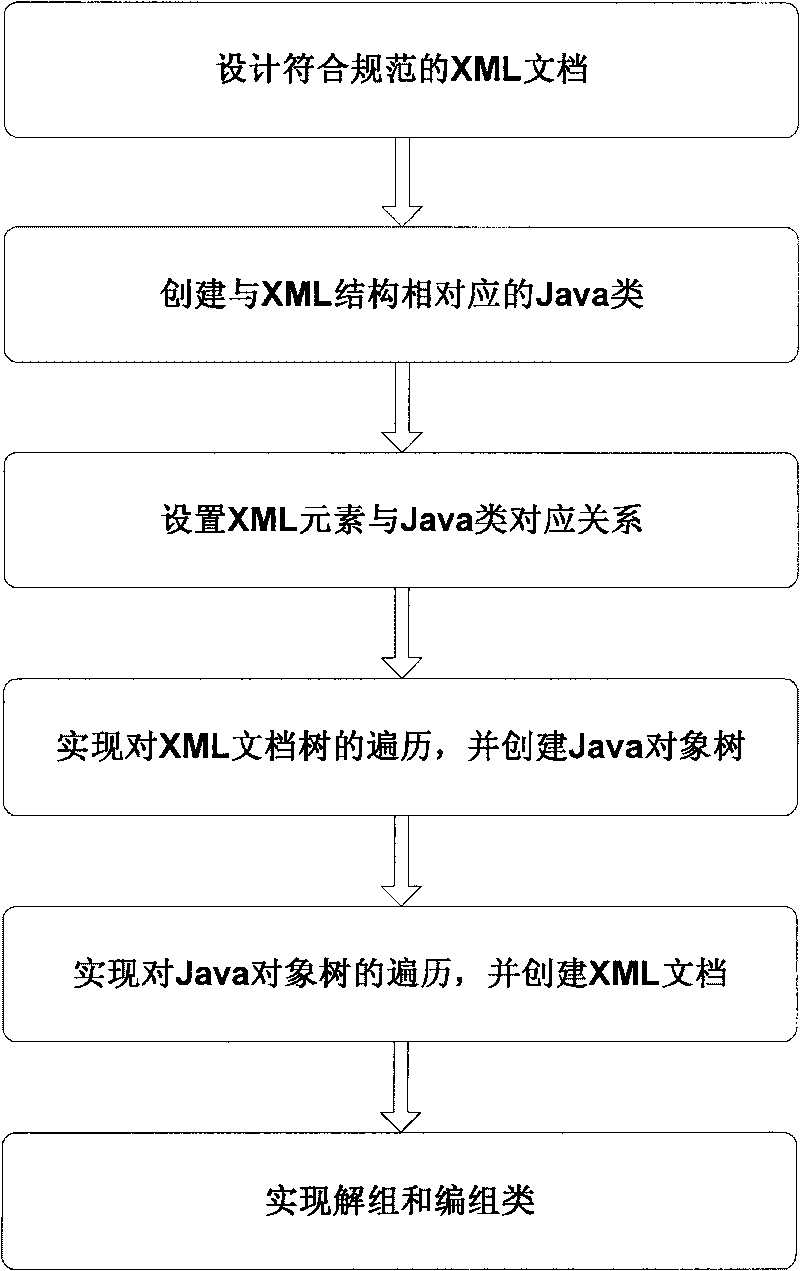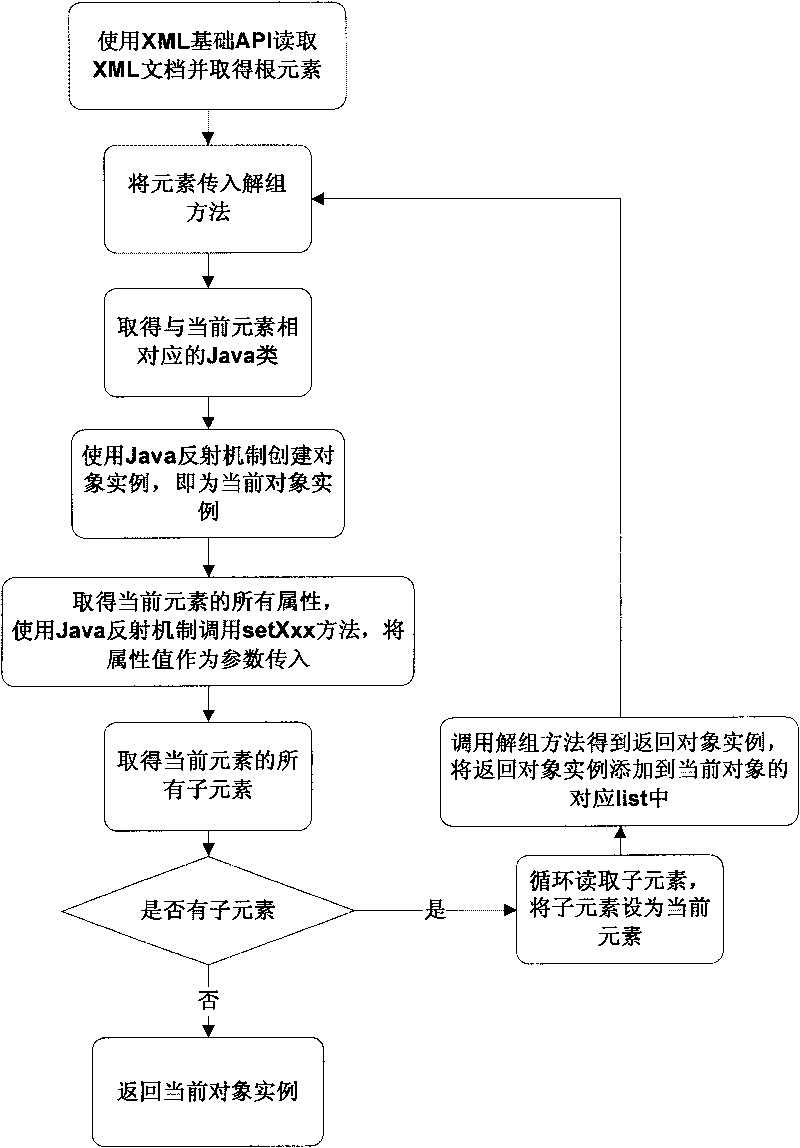Method for binding Java and XML data
A data binding, java-like technology, applied in the direction of electrical digital data processing, special data processing applications, instruments, etc., can solve the problem of not providing data binding methods, etc., to achieve good access speed, reduce development difficulty, and easy access. Effect
- Summary
- Abstract
- Description
- Claims
- Application Information
AI Technical Summary
Problems solved by technology
Method used
Image
Examples
Embodiment Construction
[0072] pass below Figures 1 to 4 , to introduce a specific embodiment of the present invention.
[0073] Such as Figures 2 to 4 Shown, a kind of method of realizing Java and XML data binding of the present invention comprises the following steps:
[0074] Step 1: Design an XML document that conforms to the specification. The XML that uses this method to realize data binding needs to conform to the XML design specification.
[0075] Step 2: Create Java classes corresponding to the elements according to the structure of the XML document.
[0076] XML element types include simple types and complex types. The values of simple types cannot contain elements or attributes. Complex types can produce the effect of nesting elements in other elements, or add attributes to elements.
[0077] Each complex-type element in an XML document should have a Java class corresponding to it, and the attributes in the element and simple-type sub-elements correspond to the attributes of the Jav...
PUM
 Login to View More
Login to View More Abstract
Description
Claims
Application Information
 Login to View More
Login to View More - R&D
- Intellectual Property
- Life Sciences
- Materials
- Tech Scout
- Unparalleled Data Quality
- Higher Quality Content
- 60% Fewer Hallucinations
Browse by: Latest US Patents, China's latest patents, Technical Efficacy Thesaurus, Application Domain, Technology Topic, Popular Technical Reports.
© 2025 PatSnap. All rights reserved.Legal|Privacy policy|Modern Slavery Act Transparency Statement|Sitemap|About US| Contact US: help@patsnap.com



